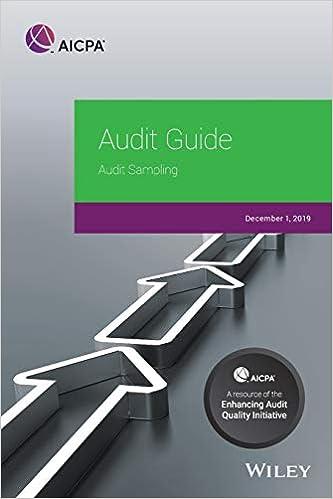Question
Recording Purchases and Sales Cabral Office Products sells computer printers and printer supplies. One of its products is a toner cartridge for laser printers. At
Recording Purchases and Sales
Cabral Office Products sells computer printers and printer supplies. One of its products is a toner cartridge for laser printers. At the beginning of 2019, there were 200 cartridges on hand at a cost of $60 each. During 2019, Cabral Office Products purchased 1,400 cartridges at $60 each. After inspection, Cabral determined that 10 cartridges were defective and returned them to the supplier. Cabral also sold 800 cartridges at $90 each and sold an additional 750 cartridges at $102 each after a midyear selling price increase. Customers returned 15 of the cartridges that were purchased at $102 to Cabral for miscellaneous reasons. Assume that Cabral Office Products uses a perpetual inventory system.
Required:
1. Prepare summary journal entries to record the purchases, sales, and return of inventory. Assume that all purchases and sales are on credit but no discounts were offered. Make journal entries in the order that transactions are presented above.
Record the entry for the purchases during the year.
| Inventory | |||
| Accounts Payable | |||
| (Purchased inventory on account) |
Feedback
In each transaction, consider whether the company is the buyer or the seller. From the buyer's perspective, the historical cost principle implies that inventory cost will include the purchase price of the inventory plus any cost of bringing the goods to a salable condition and location. From the sellers perspective, the sale or return of inventory requires two journal entries one to record the revenue portion of the transaction and one to record the expense (and inventory) portion of the transaction.
Record the entry for the return, by Cabral Office Products, of the cartridges to its supplier.
| (Recorded return of defective cartridges sold) |
Feedback
In each transaction, consider whether the company is the buyer or the seller. From the buyer's perspective, the historical cost principle implies that inventory cost will include the purchase price of the inventory plus any cost of bringing the goods to a salable condition and location. From the sellers perspective, the sale or return of inventory requires two journal entries one to record the revenue portion of the transaction and one to record the expense (and inventory) portion of the transaction.
Record the entry for the sales during the year.
| Accounts Receivable | |||
| Sales Revenue | |||
| (Sold inventory on account) |
Feedback
In each transaction, consider whether the company is the buyer or the seller. From the buyer's perspective, the historical cost principle implies that inventory cost will include the purchase price of the inventory plus any cost of bringing the goods to a salable condition and location. From the sellers perspective, the sale or return of inventory requires two journal entries one to record the revenue portion of the transaction and one to record the expense (and inventory) portion of the transaction.
Record the entry for the cost of goods sold related to the sales during the year.
| Cost of Goods Sold | |||
| Inventory | |||
| (Recorded cost of inventory sold) |
Feedback
In each transaction, consider whether the company is the buyer or the seller. From the buyer's perspective, the historical cost principle implies that inventory cost will include the purchase price of the inventory plus any cost of bringing the goods to a salable condition and location. From the sellers perspective, the sale or return of inventory requires two journal entries one to record the revenue portion of the transaction and one to record the expense (and inventory) portion of the transaction.
Record the entry for the return, by customers, of the cartridges to Cabral Office Products.
| Sales Returns and Allowances | |||
| Accounts Receivable | |||
| (Recorded return of defective cartridges) | |||
| Inventory | |||
| Cost of Goods Sold | |||
| (Recorded return of defective cartridges) |
Feedback
In each transaction, consider whether the company is the buyer or the seller. From the buyer's perspective, the historical cost principle implies that inventory cost will include the purchase price of the inventory plus any cost of bringing the goods to a salable condition and location. From the sellers perspective, the sale or return of inventory requires two journal entries one to record the revenue portion of the transaction and one to record the expense (and inventory) portion of the transaction.
2. What is the cost of ending inventory, cost of goods sold, and gross profit for 2019?
| Cost of ending inventory | $ |
| Cost of goods sold | $ |
| Gross profit | $ |
Feedback
The balance in the inventory account reflects the cost of the ending inventory.
Cost of goods sold can be determined with reference to the previously made journal entries. Cost of goods sold also reflects the units sold, the price per unit, and if necessary, an adjustment for the cost of any units returned.
Gross profit is a function of Sales and Cost of goods sold.
Step by Step Solution
There are 3 Steps involved in it
Step: 1

Get Instant Access to Expert-Tailored Solutions
See step-by-step solutions with expert insights and AI powered tools for academic success
Step: 2

Step: 3

Ace Your Homework with AI
Get the answers you need in no time with our AI-driven, step-by-step assistance
Get Started


